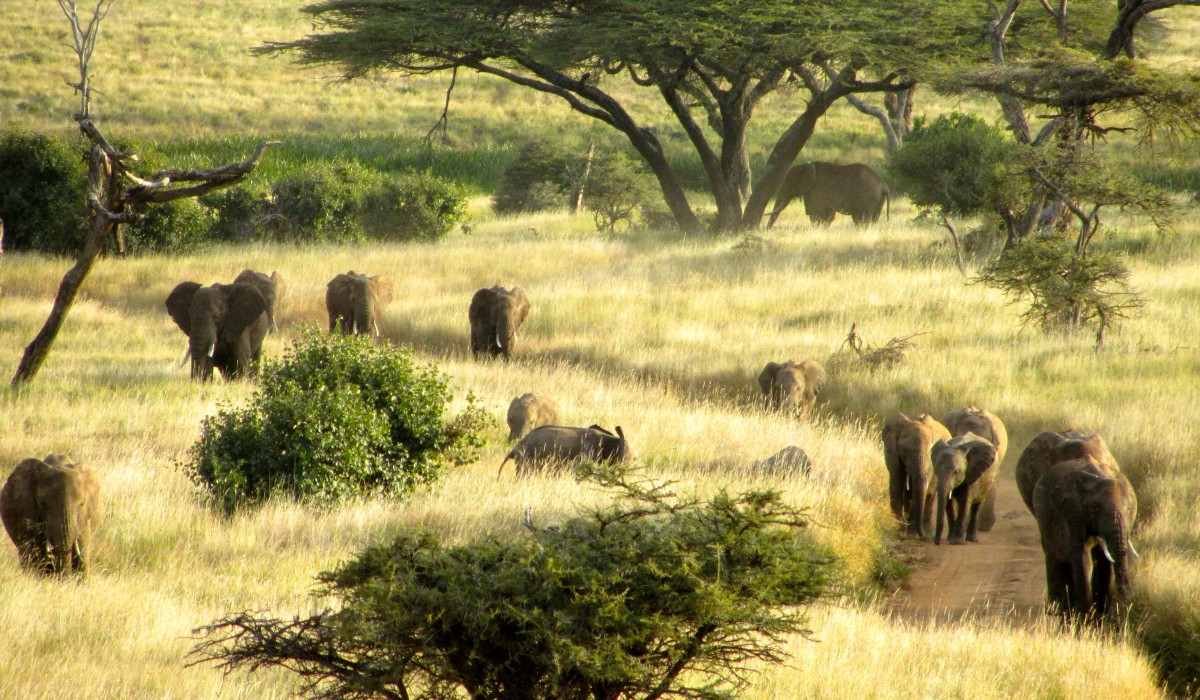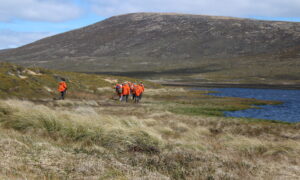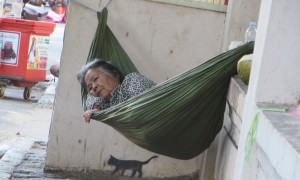by Kate Dernocoeur, guest blogger
The opportunity to visit Africa is most meaningful to me for the chance to witness exotic creatures in their natural habitat. Giraffes. Zebras. Monkeys and baboons. Hyenas. Antelope and impala. Lions and leopards and cheetahs. In February this year, I was in Kenya at the 55,000-acre Lewa Wildlife Conservancy near Mt. Kenya (about 5 hours’ drive northeast of Nairobi) and in the 583-square-mile Maasai Mara National Reserve. Then I relocated to South Africa for further game-viewing opportunities at Zulu Nyala, a 4,500-acre private park located near the southeastern coast.
Even after days of bumping around in LandCruisers to seek out whatever animals happened to cross our paths, it was impossible to become complacent. It was even more exciting to depart the safety of motorized vehicles (twice!), and walk upon the land.
Although the wild animals seem relatively safe in their preserves and conservancies, it is a fragile situation. The pathways that have been their bailiwick for millennia are increasingly blocked. There’s a lot of competition and conflict with humans who don’t—can’t—tolerate animals who encroach upon their settlements and crops and other claims upon the land.
Of all the African creatures, a special place in my heart goes to the rhinos and the elephants, because they are especially under fire. Both species are being blithely gunned down, rhinos for their horns, elephants for their ivory. The insatiable appetite for these things in the rising middle class of China is the biggest problem. At each stop, there was plenty of conversation with locals about anti-poaching efforts to try to save the rhinos and elephants, but the task is dangerous and difficult.
Preservationists are up against widespread misinformation, for starters. People think elephants regrow their tusks, like teeth, that they aren’t really being killed. They cannot appreciate the devastation to the close-knit elephant societies when they lose even one member of the herd. Then there is the mythology that rhino horn is an aphrodisiac, when it’s just keratin, the same substance as fingernails. At the current rate of one rhino poaching a day, the 2,700 black rhino left in Africa are fighting a losing battle. With less than one percent of the 5 -10 million African elephants that roamed the continent in 1930 remaining (600,000), the situation is dire.
And so, I honor these beautiful, hardy, wise, long-lived animals. To witness them grazing on an African savannah is to see the inestimable grace of just…being. One day while walking, a herd of elephants grazed in our direction until they were so close we could hear them chew. A bull, trying to figure out what we were, bluff-charged us. It gave me abiding respect for raw power. Later we found ourselves at close range to a black rhino, a notably irascible species. Luckily, he preferred the shade of the acacia under which he was resting.
I cherish these experiences. Even from the far-off comfort of my North American home, I know I must never let them tarnish. I must share as often as I can the importance to us all of preserving natural places so that every splendid wild creature can—will—always still be there, able to make its way across time and space, hopefully forever.
This blog celebrates Kate’s recent 12 days in three diverse ecosystems in Kenya with a company calledTropical Ice. Stay tuned for more on her African adventures.













Comments
6 CommentsAfrica elepants | Firewavedesign
Mar 12, 2012[…] Rhinos and Elephants, Oh MY! | DesignDestinations […]
Julie Hawksworth
Mar 13, 2012Beautifully written Kate, thank you. I had forgotten about precarious state of elephants and rhinos and am wondering what is best way to help?
KateCoeur
Mar 14, 2012Julie – thanks for asking about ways to help. There are many. Among others, please just keep advocating for wildlife and do anything you can to help people understand that poaching (and the economic incentives underlying it, i.e. the “market” for horn & tusks) is to be resisted. If you can, send funds to places like Lewa Downs, which is at the forefront of rhino preservation (Google their site), or to other organizations whose missions resonate for you along these lines. Closer to home, resist (please!) ANY development (esp. oil/gas) in the ANWR and Arctic Ocean (see Natural Resource Defense Council). It’s a huge threat to polar bear populations. Many thanks.
Peggydepersia
Mar 13, 2012Poetically described, Kate. Have enjoyed your posts on Africa very much.
Jacque Zaremba
Mar 13, 2012Enjoyed this piece and the beautiful photos of these creatures that need to be protected. Thanks for sharing, Kate.
google adwords
Nov 4, 2015Admiring the time and effort you put into your blog and in depth information you provide.
It’s nice to come across a blog every once in a while that
isn’t the same out of date rehashed material. Excellent read!
I’ve saved your site and I’m adding your RSS feeds to my Google account.